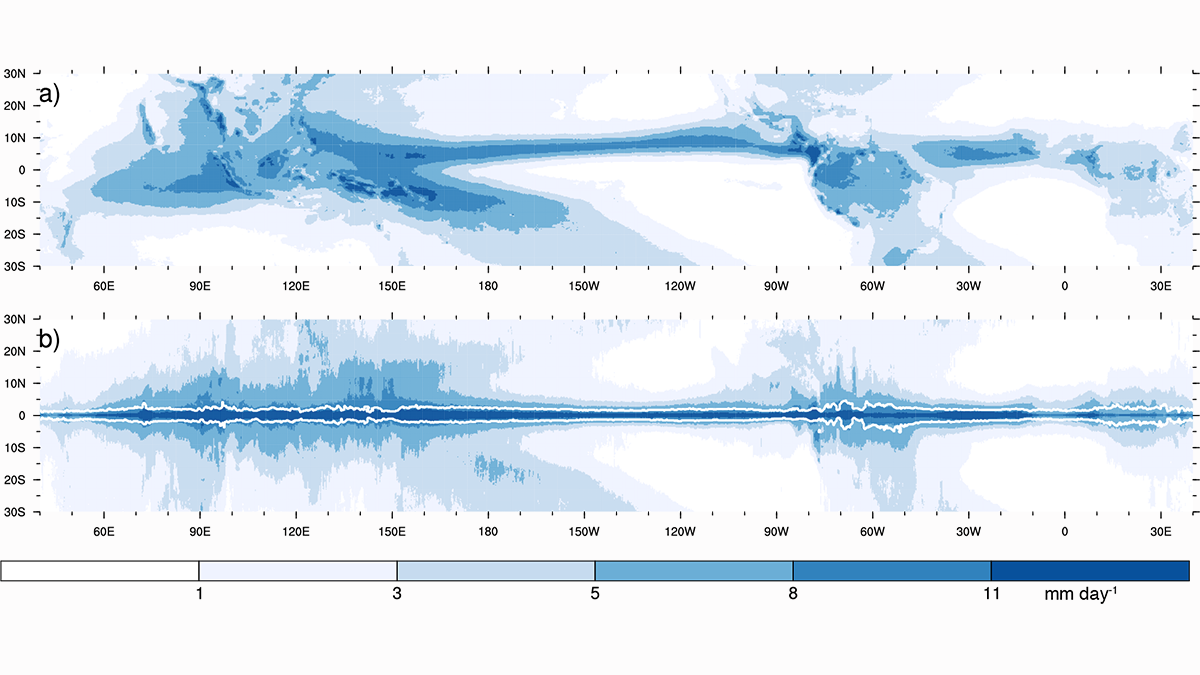Source: AGU Advances
Editors’ Highlights are summaries of recent papers by AGU’s journal editors.
Tropical rainforests and other ecosystems in the moist tropics critically depend on high amounts of rain to compensate for their large loss by evapotranspiration. What maintains these high rates of rain has been a scientific conundrum, especially when considering that it rains as much over tropical land as it does over the tropical ocean. Using observations and conceptual models, Hohenegger and Stevens [2022] now propose that these unexpectedly high rain rates over land are a consequence of land permitting the tropical rainbelts to move more compared to the ocean, and also causing them to broaden. They show that these changes support a negative feedback between surface water storage and precipitation, causing the land to receive more rain than its fair share. In contrast, they show that current climate models tend to disfavor rain over land, making tropical rainfall in these models possibly oversensitive to climate change.
Citation: Hohenegger, C., & Stevens, B. [2022]. Tropical continents rainier than expected from geometrical constraints. AGU Advances, 3, e2021AV000636. https://doi.org/10.1029/2021AV000636
—Nicolas Gruber, Editor, AGU Advances

